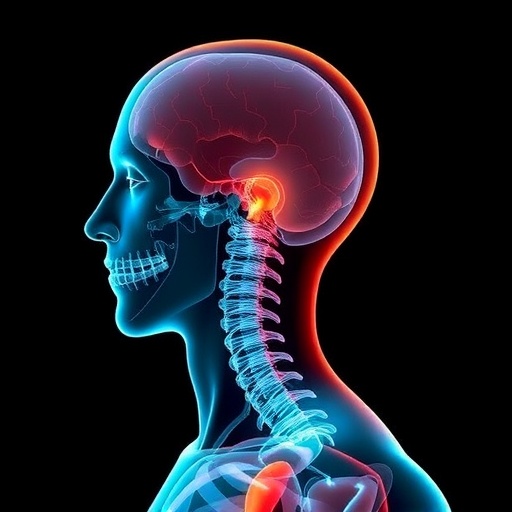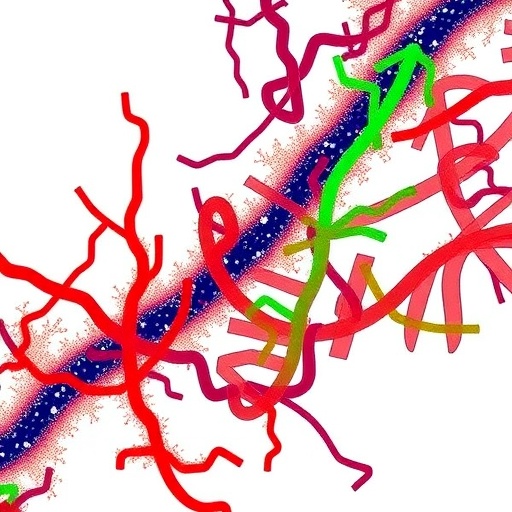Credit: Juliusz Kruszelnicki
WASHINGTON D.C., NOVEMBER 6, 2018 — A whiff of plasma, when combined with a nanosized catalyst, can cause chemical reactions to proceed faster, more selectively, at lower temperatures, or at lower voltages than without plasma — and nobody really knows why.
Using computer modeling, Juliusz Kruszelnicki of the University of Michigan investigated the interactions between plasmas and metal catalysts embedded into ceramic beads in a packed bed reactor. He discovered that together, the metals, beads and gas create plasma that intensifies electric fields and locally heats the catalyst, which can then accelerate reactions.
Kruszelnicki will talk about this work at the American Physical Society 71st Annual Gaseous Electronics Conference and 60th Annual meeting of the APS Division of Plasma Physics, which will take place next week, Nov. 5-9 at the Oregon Convention Center in Portland.
These plasma reactors have tremendous potential to make valuable chemical processes more efficient and cost-effective, such as removing air pollution, converting carbon dioxide into fuels and producing ammonia for fertilizer, through "plasma chemical conversion."
"Combining thermocatalytic systems and plasmas allows new avenues to produce chemical products you otherwise might not be able to, or perhaps to do so at higher efficiency," Kruszelnicki said.
Kruszelnicki modeled the interactions of plasma and catalysts using advanced multiphysics codes developed in the lab of Mark J. Kushner at the University of Michigan. These include modules for phenomena such as electromagnetics, surface chemistry, fluid dynamics and chemical kinetics. He modeled a packed bed reactor, which is a tube filled with ceramic beads, with an electrical current passing through concentric electrodes. When gases move through the reactor, catalysts cause them to react in specific ways, such as combining nitrogen and hydrogen to generate ammonia.
Kruszelnicki found that when the beads are embedded with metallic catalyst particles and then electrified, field emission of electrons takes place, which enables higher densities of plasma. The plasma heats the catalyst, which can cause the chemical reaction to proceed faster and more efficiently, potentially lowering the applied power needed for the reaction.
"Through this process of localizing the electric field, electrons can be emitted from the surface of the metal particles and start a plasma, where it otherwise wouldn't occur," Kruszelnicki said.
By simulating low-temperature plasma chemistry, Kruszelnicki and other members of the Kushner lab are discovering new ways that plasma and catalysts work together to make plasma chemical conversion more efficient than traditional chemical conversion. Currently they are working with the National Science Foundation's Industry-University Cooperative Research Centers Program to collaborate with companies to translate this research for use in industry. They also hope that these more efficient processes will be compatible with off-the-grid applications, such as making fertilizer for subsistence farmers using solar power.
###
Presentation #ET4.3, "Electric field emission and local surface heating in plasma packed bed reactors having metal catalyst-impregnated dielectric beads," by Juliusz Kruszelnicki will take place Tuesday, Nov. 6, 10:15 a.m. in Oregon Convention Center Room A107-A109. Abstract: http://meetings.aps.org/Meeting/GEC18/Session/ET4.3
USEFUL LINKS
Main meeting website: http://www.apsgec.org/gec2018/
Meeting abstracts: http://meetings.aps.org/Meeting/GEC18/APS_epitome
Hotel information: http://www.apsgec.org/gec2018/housing.php
PRESS REGISTRATION
We will grant free registration to credentialed journalists and professional freelance journalists. If you are a reporter and would like to attend, contact Rhys Leahy or the AIP Media Line ([email protected], 301-209-3090). We can also help with setting up interviews and obtaining images, sound clips, or background information.
ABOUT GEC
GEC is a special meeting of the Division of Atomic, Molecular and Optical Physics (DAMOP) of the American Physical Society. GEC promotes invaluable exchange of scientific information, viewpoints, and approaches (experimental, theoretical, modeling, and numerical simulation) to understanding the physical and chemical processes occurring in partially ionized, collisional plasmas and between the atoms, molecules, charged particles, photons, waves, and fields. More: http://www.apsgec.org/gec2018/index.php
ABOUT DAMOP
The Division of Atomic, Molecular and Optical Physics (DAMOP) was founded in 1943, and it was the first division of the American Physical Society. Its central focus is fundamental research on atoms, simple molecules, electrons and light, and their interactions. More: https://www.aps.org/units/damop/index.cfm
ABOUT APS
The American Physical Society (APS) is a nonprofit membership organization working to advance the knowledge of physics. More: https://www.aps.org
Media Contact
Rhys Leahy
[email protected]
301-209-3090
@APSphysics
http://www.aps.org




